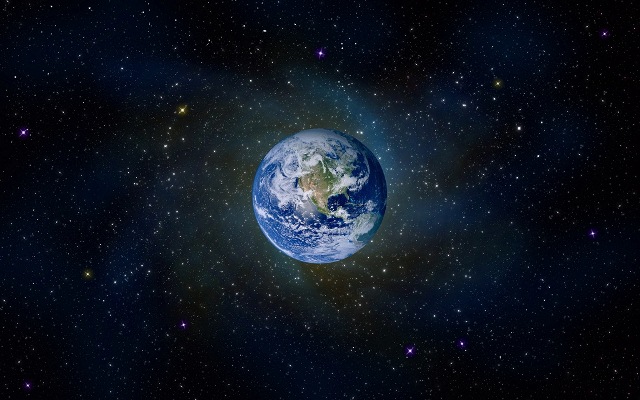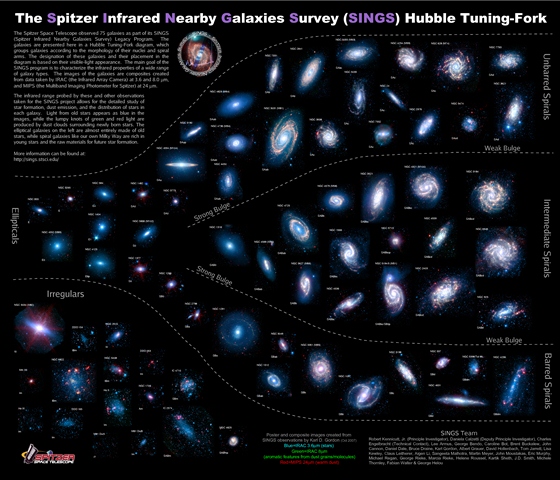
20 Feb 2014 by Yeo Teck Thiam-
Most people are familiar that stars and planets are very different celestial bodies. On the one hand, stars shine and give out light, but planets do not. Planets can only reflect the light of stars, and thankfully, are often cool enough for matter to harden as solids. So, there is the wonder how planets like earth are so different from the stars.
When we look up to the skies at night, planets like Venus and Mercury are clearly seen. They reflect the light from the sun, just like the moon. However, their paths in the skies are irregular, for they ‘wander’ in the heavens.
Thus the ancient references to planets are as ‘wandering stars’. Jude the Lord’s brother, warned Christians about evil men who were wild waves of the seas, wandering stars in Jude 13. Thus planets are not described favourably as stars for this purpose.

The Formation of Elements of Matter
However, planets tell us an important story. It is because planets have heavier elements of matter, unlike stars which contain significant amounts of hydrogen from gravitational attraction, “from the gathering of the waters” in the universe.
Thus, when we look at how planets have heavier elements, we are looking at how stars lead to this formation. If matter does not contain elements like carbon, oxygen, then we will never have life on earth.
In background, this has to do with stars giving light. The light comes from the nuclear fusion of hydrogen ions (that is, protons) and the “waste” end product is helium ions (that is, alpha particles).
If stars can only do this, then we end up producing only helium in nuclear combustion. We won’t have any planet. Something must happen to form elements from helium. Relativistic quantum theory therefore provides an answer for this beginning.
Hans Bethe, among others, contributed to our understanding of aspects of the stars’ part in energy production from nuclear fusion (Bethe’s Nobel Prize for 1967).
One important aspect that Bethe showed is the role for carbon.
Bethe’s catalytic carbon cycle proposal (in nuclear fusion known as the CNO cycle, which stands for carbon nitrogen oxygen) is a key alternate route for nuclear fusion — apart from standard “chain reaction” of hydrogen ions.
Carbon is not consumed as it is a catalyst in this nuclear fusion. Nonetheless, the “waste” product of hydrogen fusion is still helium.
This helium later fused and formed more carbon. Why this happened is important. It is because this helium fusing to form carbon should not happen — that is, it cannot happen unless a miracle takes place.
The Miracle of Carbon Formation
Fred Hoyle was an ardent scientist who supported the steady static universe concept. He did not expect this helium conversion to carbon, unless the reaction can miraculously produce more “stable” products.
Holye was hoping this cannot happen — but his data showed carbon’ internal energy levels were actually lower, so the reaction must occur. Fred Hoyle was totally taken aback by the experimental data. This should never happen, except as a miracle!
The result means that heavier elements do form. Carbon formation by stars defied logical concepts to explain how this universe should happen. Stephen Hawking stated that had the strong nuclear force been stronger by just 0.5%, no carbon would form, and consequently, no life is possible.
Without carbon, no life is possible. In a simplistic statement, without the CNO cycle and carbon fusion, we won’t be here.
So it is written: And God said, “Let the water under the sky be gathered to one place, and let dry ground appear.” And it was so. God called the dry ground “land,” and the gathered waters he called “seas.” Genesis 1:9,10.
Early Massive Stars and Later Stars
Nevertheless, the long time that was taken to form our sun raises another puzzle that also needs to be resolved. We know, in the early universe, elementary particles were closer together because the size of the universe was small. Naturally, we must expect that stars should have formed more easily due to this close proximity through stronger gravity. This is true.
However, this stronger gravitational attraction also resulted in larger masses of particles gathered, and the gravitational collapse would ignite and form more massive stars. Such early massive stars did form in the universe.
They tended to burn faster and also to explode due to intense internal heat. Most of these early massive stars did not survive. In the process of dying, these stars gave birth to matter of heavier elements due to fusion of matter.
The debris and remnants of these dying massive stars in time regrouped to form a newer generation of waters with stars. As a result, galaxies were formed in this 2nd generation. The clouds of these waters in the heavens begin to have heavier elements. Our Milky Way and other galaxies developed from these early massive stars.
The Sun and a Third Generation of Stars
Through this process of star formation, some stars in our Milky Way galaxy likewise were also too massive. These 2nd generation massive stars in many galaxies exploded in a phenomenon we see as the supernova. We can sometimes see such a supernova event in the skies even today.
Over time, remnants of the supernova stars led to a new 3rd generation cloud of particles to gather together in some parts of our Milky Way also. This newer 3rd generation cloud had higher density of heavy elements such as we know in our solar system. Our solar system and sun is a 3rd generation in formation of matter in the universe.
From our present knowledge, our sun is believed to be ignited and began to shine some nine billions years after the primordial light event. From present day, this was some four to five billion years ago.
The Greater and Lesser Lights
Before closing this consideration about the waters above the skies, I must wonder about the sun and moon that shine.
The gathering of “the waters above the skies” took a lengthy time after the “primordial light” event. Consequently, this starlight that we know was formed in a continual process, and therefore Scripture does not speak of time in Creation. Instead Scripture only tells us that “and there was light”.
Scripture also gives us this revelation in relation to God’s purpose in Creation for the earth. It does not state the time when the sun, the moon, and stars were formed, since every celestial body would be formed in God’s time. Thus we do not conclude the sun, moon and stars were “made” only on some specific day in Creation.
It is thus important that we do not seek to catalogue and define God’s Creation solely as a sequence in time. This idea of time is man-made because God did not state time in Creation in Genesis. It is because time is relative.
We may ask, then, what was God’s purpose when Scripture describes the greater and lesser lights?
Signs and Seasons
So it is written: And God said, “Let there be lights in the expanse of the sky to separate the day from the night, and let them serve as signs to mark seasons and days and years, and let them be lights in the expanse of the sky to give light on earth.” And it was so. Genesis 1:1, 15
As we know, the moon took a different time to form compared to the time the sun was formed. The stars also took different time periods to form. Here, we are given to know Genesis’ account with God’s purpose for earth in Creation.
Therefore, in Genesis, the greater and lesser lights reveal roles in relation to the earth. It is about the marking and calibration of day and night, so that we have a means to determine the passage of time, to be signs to mark the seasons and days and years.
The greater and lesser lights were in God’s purpose for earth, as our sun and moon to regulate our day and night, and to give seasons. Thus the Genesis account has an important focus on earth for in the beginning God created the heavens and the earth. It is not focused on time as we might expect.
So it is written in God’s promise to Noah after the Flood: “While the earth remains, seedtime and harvest, cold and heat, summer and winter, day and night, shall never cease.” Genesis 8:22.
Note: Mr Yeo Teck Thiam is a retireer who used to work as a chemical engineer, specializing in food and perfume chemistry for an international food company and perfumer. His other main interest is astronomy and other mathematical matters, relating to the Biblical passages.
References for pictures
http://d1jqu7g1y74ds1.cloudfront.net/wp-content/uploads/2013/05/ngc6559.jpg
http://upload.wikimedia.org/wikipedia/commons/4/4b/Lifestyles_of_the_Galaxies_Next_Door.jpg
http://solarsystem.nasa.gov/multimedia/gallery/PIA03149.jpg
http://www.columbanmission.net/example_images/wide/h.jpg











Well done, Christianity Malaysia, for publishing this article. What a joy to read – in terms of content, doctrine, and faultless grammar and sentence construction!